Recently, at the vehicle-road-city integration forum organized by the China Electric Vehicle 100 People Meeting, Dr. Chen Shanzhi, Deputy General Manager and Chief Engineer of China Information and Communication Technology Group Co., Ltd., Director of the National Engineering Research Center for Mobile Communication and Vehicle Networking delivered a keynote speech on the topic of “Consolidating and Expanding the Advantages of New Energy Vehicle Development” with the title “C-V2X Vehicle Networking and Road-Cloud Collaboration Progress and Suggestions.”

Dr. Chen Shanzhi stated that as new energy vehicles advance towards intelligent connected vehicles, vehicle networking has become an essential path for supporting intelligent connected vehicles. He mentioned that the development of vehicle networking is currently entering the fast lane, and is in the 2.0 stage, with the main goal of enhancing intelligent driving levels, improving driving safety, ensuring public health, and increasing traffic efficiency.
Regarding the two main confusions present in the industry, Dr. Chen clarified them at the conference, which mainly include: 1. The relationship between intelligent connected vehicles, vehicle networking, and road-cloud collaboration; 2. The relationship between various communication technologies such as 4G/5G, C-V2X vehicle networking, and satellite communication. He also expressed important views on promoting the innovation and development of intelligent connected vehicles, pointing out: 1. Single vehicle intelligence is the foundation and fundamental, while C-V2X vehicle networking is an enhancement technology, and the two are complementary; 2. The current collaboration perception between vehicles and roads is based on each having autonomous decision-making; 3. New infrastructure for vehicle networking will promote the integration of vehicle, road, and city development.
The following is the transcript of the speech (slightly edited):
First, let me report on what vehicle networking is. First, vehicle networking includes: firstly, the in-vehicle network, the internal communication network of the vehicle, such as CAN or in-vehicle Ethernet, etc. Secondly, the vehicle-cloud network that has been commercially available in recent years, namely Telematics. Thirdly, the ongoing vehicle-to-everything (V2X) development.
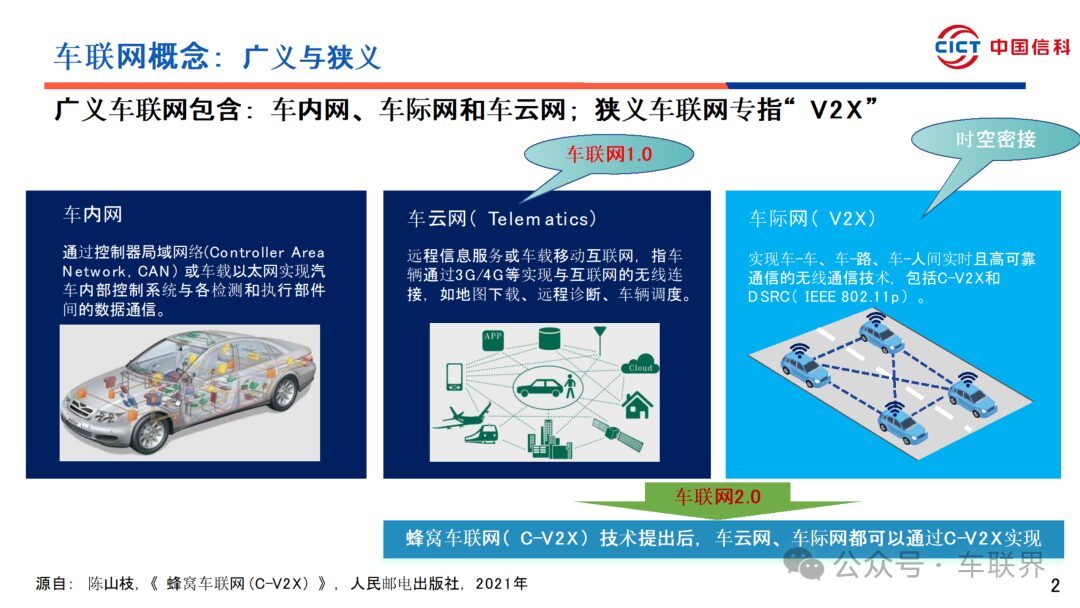
Vehicle networking 1.0, namely Telematics, mainly refers to the simple basic in-vehicle information services of the past. Currently, it is in the vehicle networking 2.0 stage, which supports L2+ intelligent driving assistance, with the main goal of improving driving safety, reducing traffic efficiency, and ensuring public health. Specifically, it includes: safety warnings, collaborative perception, intelligent transportation, etc. The future supports L5 all-weather, all-scenario unmanned driving, which we believe is the vehicle networking 3.0 stage.
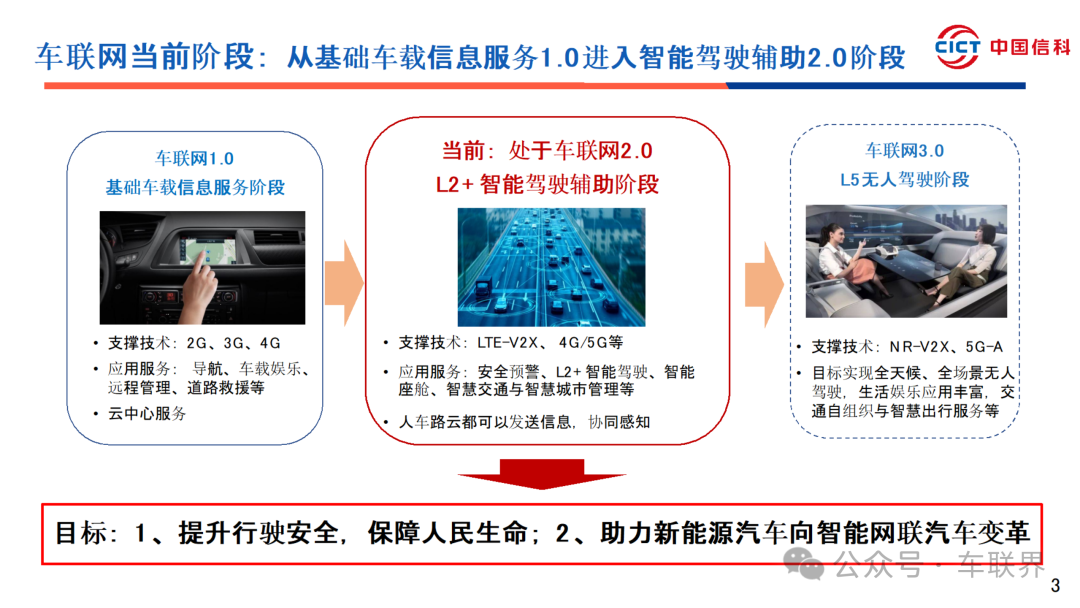
Currently, our country is vigorously promoting the transition of new energy vehicles to intelligent connected new energy vehicles, which is a significant transformation in the industry, combining social benefits and economic value. We hope to quickly advance vehicle networking to support the development of the intelligent connected new energy vehicle industry, achieving China’s leadership in the global arena.
On May 17, 2013, I was the first in the world to propose the concept and key technologies of LTE-V2X, establishing the system architecture and technical route of C-V2X.
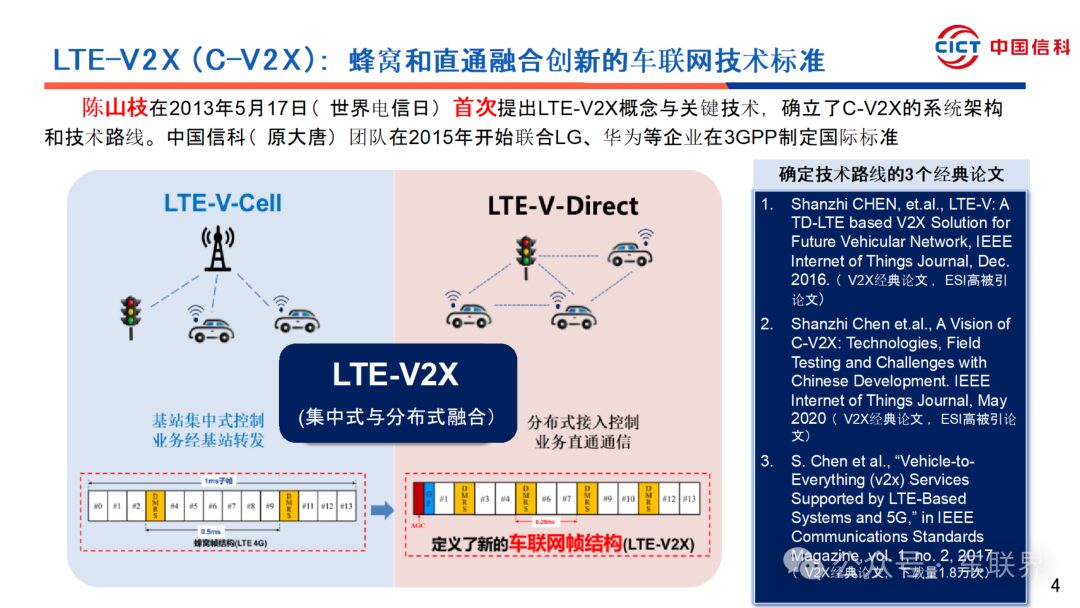
We often talk about “smart cars, intelligent roads, and collaborative clouds,” which is based on vehicle networking and road-cloud collaboration. Smart cars mean that vehicles need to become intelligent. Intelligent roads mean that roadside devices are deployed to turn roads into intelligent roads through digitalization of signal control. Collaborative clouds involve traffic management, map navigation services, etc. C-V2X vehicle networking includes short-range information interaction and long-range information services. Short-range information interaction enables communication between vehicles, vehicles and roads, and vehicles and vulnerable road users, with strict requirements for low latency and high reliability, closely related to intelligent driving. Long-range information services refer to V2N, achieving global traffic optimization and entertainment information services, with less stringent real-time requirements but good communication coverage, mainly related to intelligent cockpits.
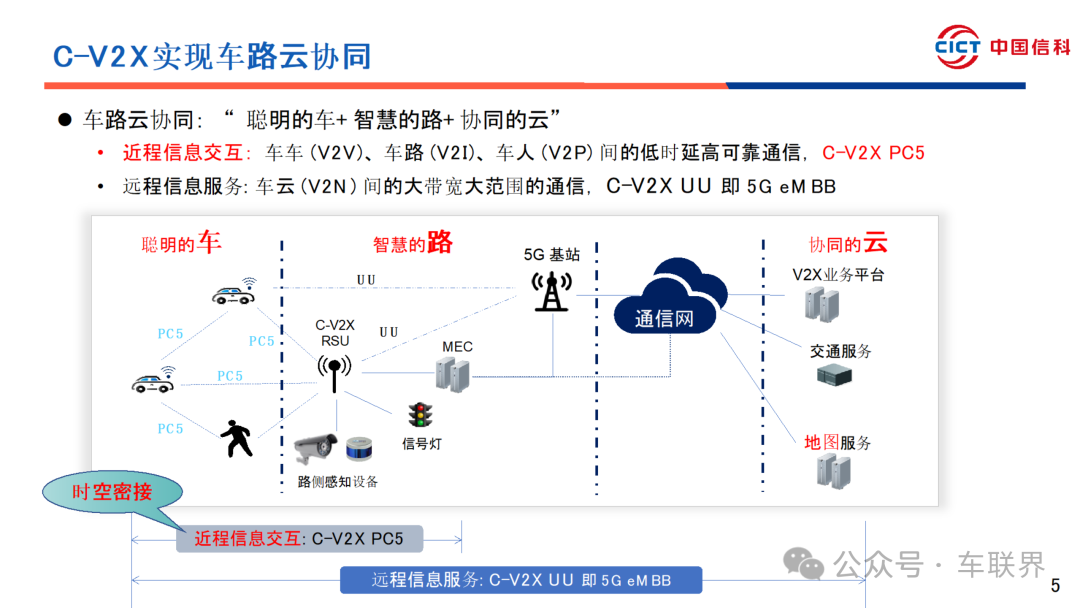
C-V2X vehicle networking development has received support from national policies, especially as China’s “14th Five-Year Plan” clearly states: actively and steadily develop vehicle networking. In response to the development of LTE-V2X/C-V2X, the country has also issued a series of policies.
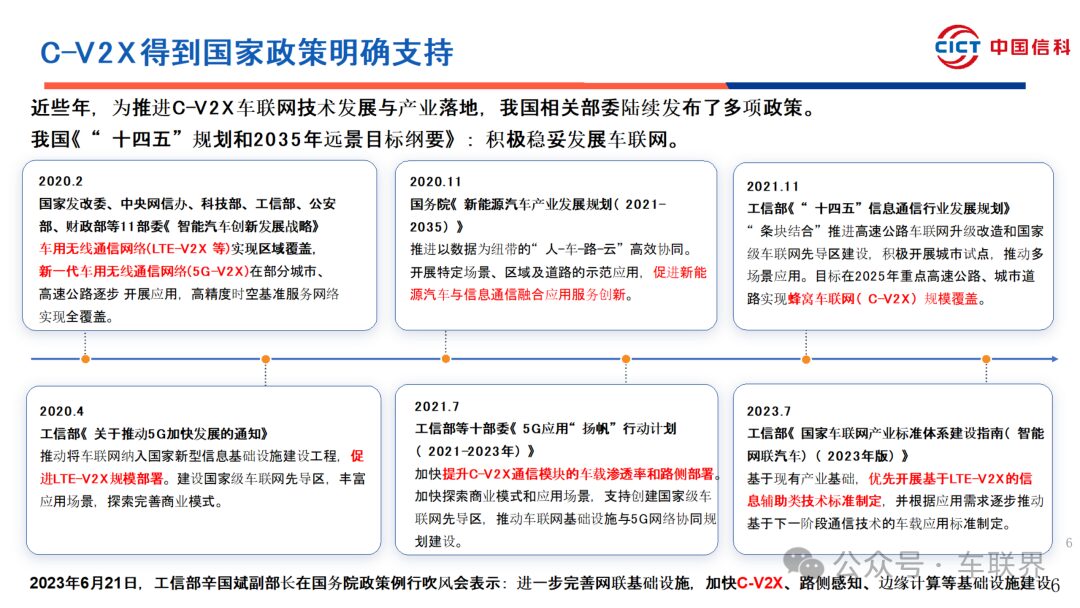
China’s C-V2X vehicle networking industry ecosystem has matured, gradually forming a multi-manufacturer supply environment that includes communication chips, communication modules, on-board units (OBU), roadside units (RSU), testing instruments, complete vehicle manufacturing, testing certification, high-precision positioning and mapping, security, etc., including in technical verification and interoperability, we are also at the forefront globally.

C-V2X vehicle networking is currently supporting the implementation of intelligent connected vehicles and intelligent transportation solutions through road-cloud collaboration, achieving collaborative perception, collaborative decision-making, and collaborative control. Currently, it is still in the collaborative perception stage, and will move towards the collaborative control stage in the future.
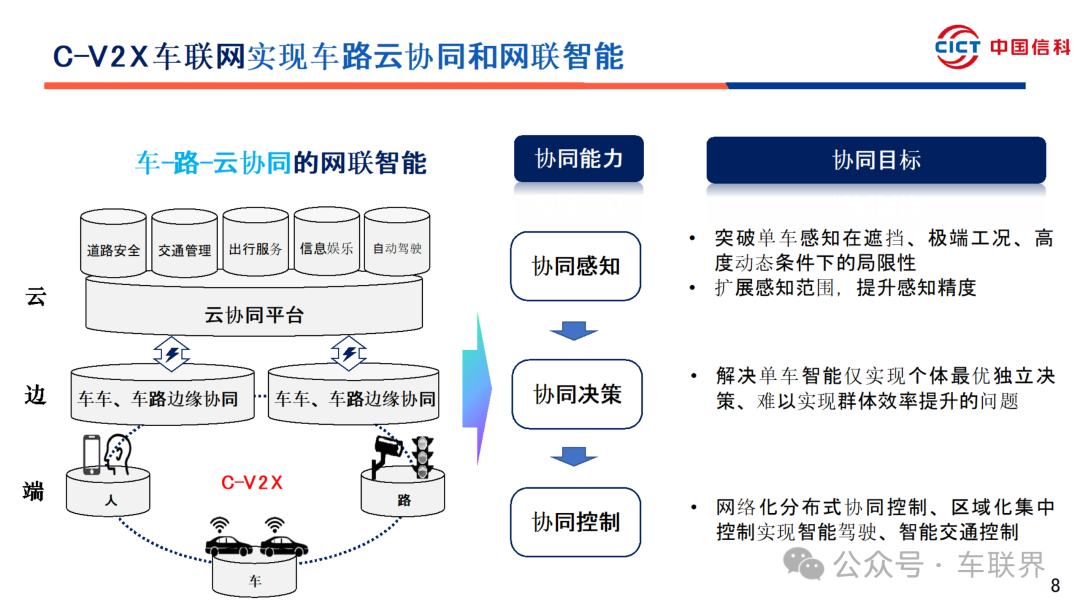
C-V2X is a typical application scenario, such as the “ghost intersection” problem, which can be solved through networked intelligence, where roadside cameras send relevant information to vehicles to avoid traffic accidents through I2V.
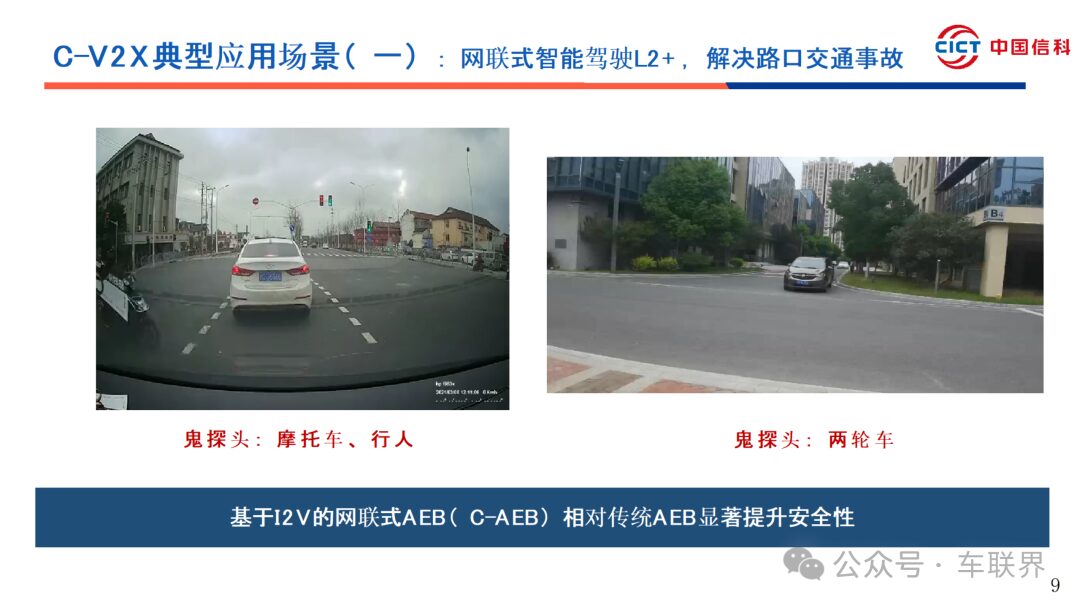
Another scenario is the highway chain collision scenario, where a serious chain collision incident occurred in Taizhou in 2022. This cannot be solved by single vehicle intelligence, as the radar and video perception distance is about 200 meters. In a highway scenario, if the front vehicle encounters a problem at a speed of over 100 km/h, it is impossible to avoid a chain collision. Through C-V2X vehicle networking, we conducted real vehicle testing and comparisons, where both the front and rear vehicles were equipped with networked ADAS, that is, the domain controller integrating C-V2X and ADAS. Based on the GAC Aion modification, when the middle vehicle cuts out, the front vehicle sends information to the rear vehicle, allowing it to brake in time. I also want to point out that our current roadside coverage and penetration rates are indeed a problem. However, it is not necessary to achieve 100% penetration rate, as in the above-mentioned case, only two out of three vehicles equipped with C-V2X functionality can achieve this. Research has shown that about 1% of connected vehicles can reduce traffic congestion by 14%, thus improving traffic efficiency.
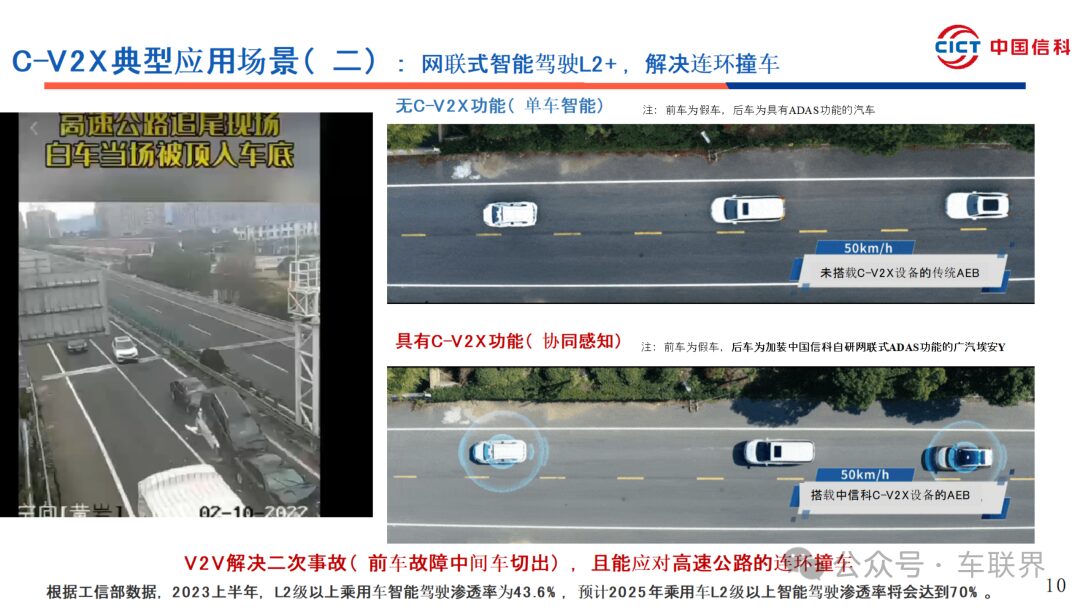
C-V2X has won in global industrial competition. In 2018, China’s Ministry of Industry and Information Technology was the first to allocate frequencies for C-V2X, while the US revoked the frequency allocated to DSRC in 2020, of which 30M was given to C-V2X. Currently, C-V2X has been recognized by both China and the US, becoming the only standard for vehicle networking globally.

Last year, the US clarified its plan to deploy C-V2X nationwide, spending 10 years to achieve 100% coverage of C-V2X on national highways by 2034, with 75% coverage at urban intersections, and established a plan for C-V2X deployment on vehicles. In fact, the US has not stated that the development of C-V2X is for the purpose of unmanned driving; they are more focused on solving traffic accident issues to save lives through connectivity. There is a statistic in the US that about 50% of traffic accidents occur at intersections, so it is not that C-V2X is only needed for future L5 unmanned driving; the current development of L2+ intelligent driving urgently requires C-V2X.
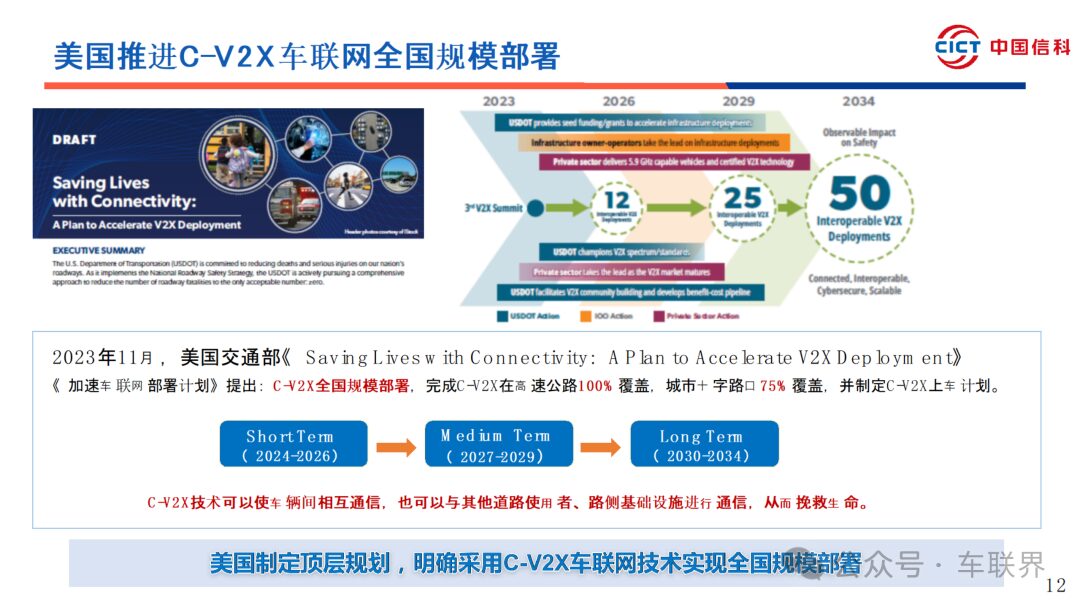
Moreover, the South Korean government announced last December that it would abandon DSRC technology and adopt LTE-V2X as the only vehicle networking communication technology.
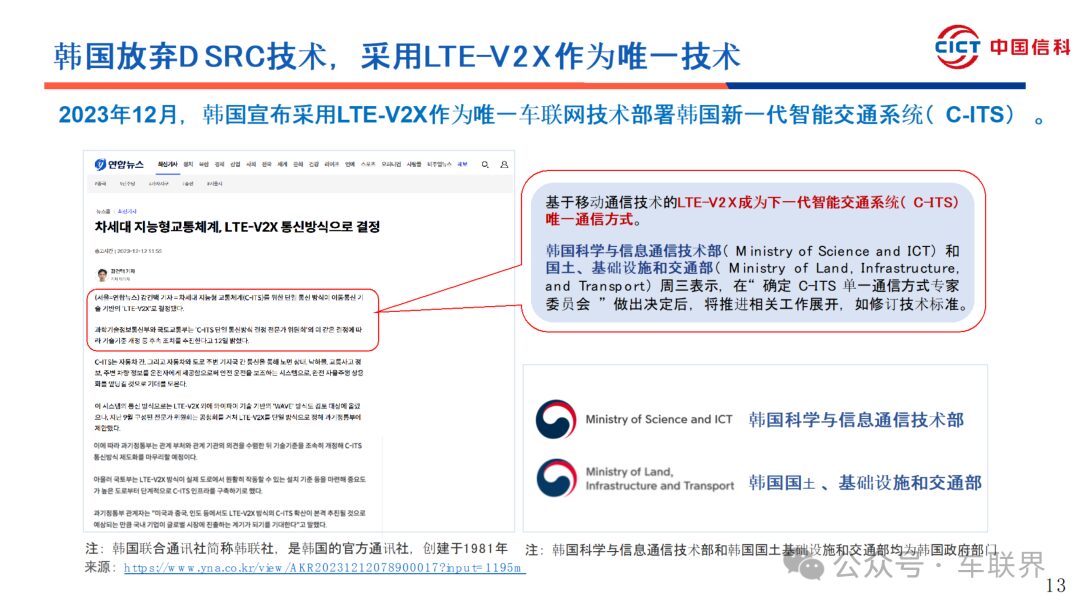
Regarding the deployment of C-V2X on vehicles, China’s C-NCAP (China New Car Assessment Program) clearly includes C-V2X in active safety testing, which is the first case globally, and it will be implemented in July this year. This will have an impact on the global NCAP system, known as US-NCAP in the US, K-NCAP in Korea, J-NCAP in Japan, and E-NCAP in Europe. China is the first to release C-NCAP for active safety involving C-V2X, just as it was the first to allocate spectrum for C-V2X in 2018, which will have a significant impact on the global automotive industry.
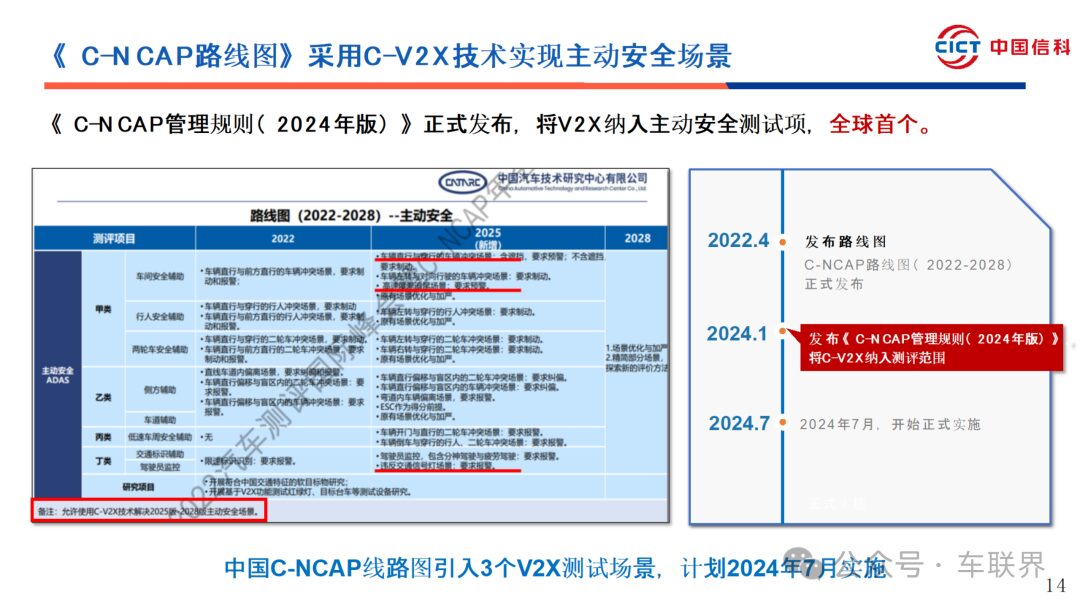
Recently, five ministries have been promoting the pilot work of intelligent networked vehicles “vehicle-road-cloud integration” applications, which is actually addressing the issues existing in past developments, indicating that the industry has reached a critical juncture. The experts mentioned earlier referred to the “two rates” issue, which I originally proposed, referring to the roadside coverage rate of C-V2X and the vehicle penetration rate. If these do not reach a certain scale, the public will not feel the benefits. Why is it necessary for the C-V2X signal control rate at intersections to reach over 90% in this pilot? Most vehicle manufacturers are questioning this; currently, in the leading and demonstration areas, the traffic light signals broadcasted by the C-V2X RSU to the next traffic light are not implemented, which is very troublesome. When L2+ is in operation, if the traffic light information participates in controlling the vehicle, and the signal is not timely, the vehicle may experience abrupt braking, leading to a poor user experience. Therefore, the C-V2X traffic light control signal must achieve continuous coverage, and interaction with intelligent connected vehicles will have value. Why is the C-V2X vehicle penetration rate an issue? When transitioning from 2G to 3G and from 3G to 4G, operators provided new phones when developing users, but why not anymore? Because once user penetration reaches 20%, the market can naturally start. Therefore, the challenges faced by our vehicle networking and vehicle-road-cloud integration in the early market require government guidance.
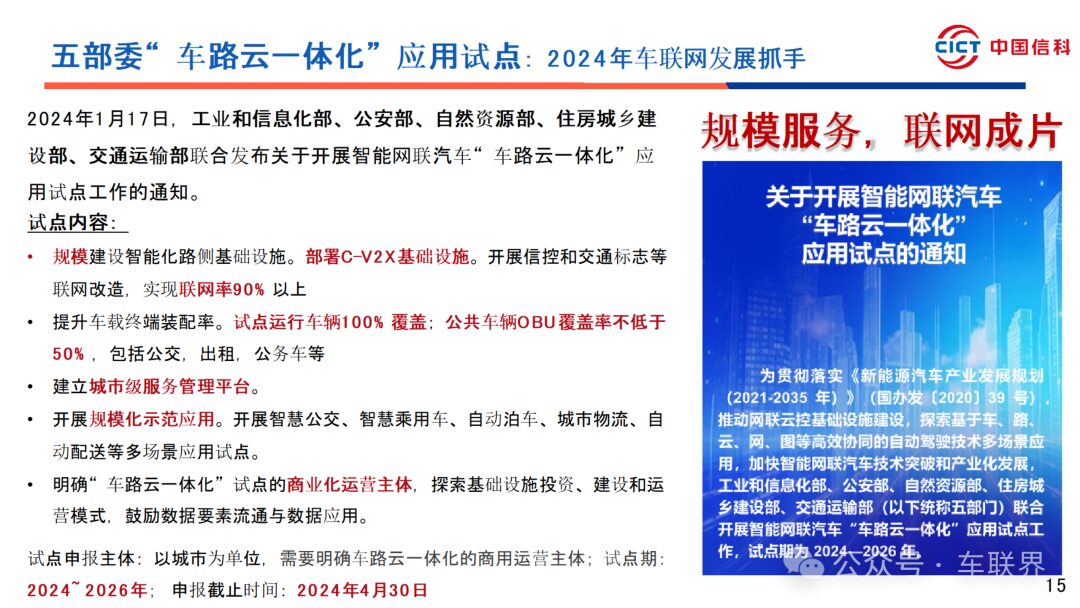
Let me clarify a few points regarding cross-sector communication, as there may be confusion in the industry:
First, the relationship between intelligent connected vehicles and vehicle networking. Intelligent connected vehicles are the core carriers of vehicle networking and road-cloud collaboration, the most important service object, and the core driving force of industrial transformation. Vehicle networking is essentially the communication connection between vehicles and roads, vehicles and other vehicles, vehicles and people, and vehicles and clouds. Road-cloud collaboration is the specific application of vehicle networking, which differs slightly in emphasis when combined with intelligent connected vehicles and intelligent transportation.
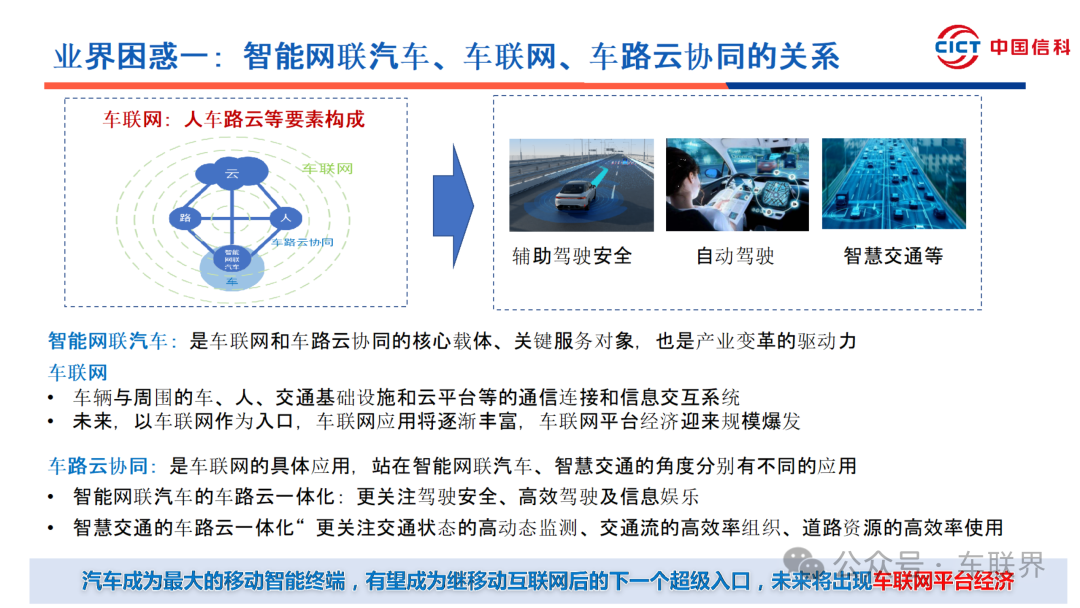
Second, the relationship between various communication technologies. The commonly mentioned communication technologies include 4G/5G, C-V2X vehicle networking, satellite communication, etc. From the perspective of serving intelligent connected vehicles and intelligent transportation, there are actually only two categories: short-range information interaction and long-range information services. Short-range information interaction refers to C-V2X, which involves communication between vehicles, vehicles and roads, and vehicles and people, with strict requirements for low latency and high reliability, mainly related to intelligent driving, achieving driving safety and traffic efficiency. Long-range information services, such as map downloads and infotainment in the intelligent cockpit, are realized through 4G/5G base stations and satellite communication, which do not have such strong real-time requirements but require good communication coverage.
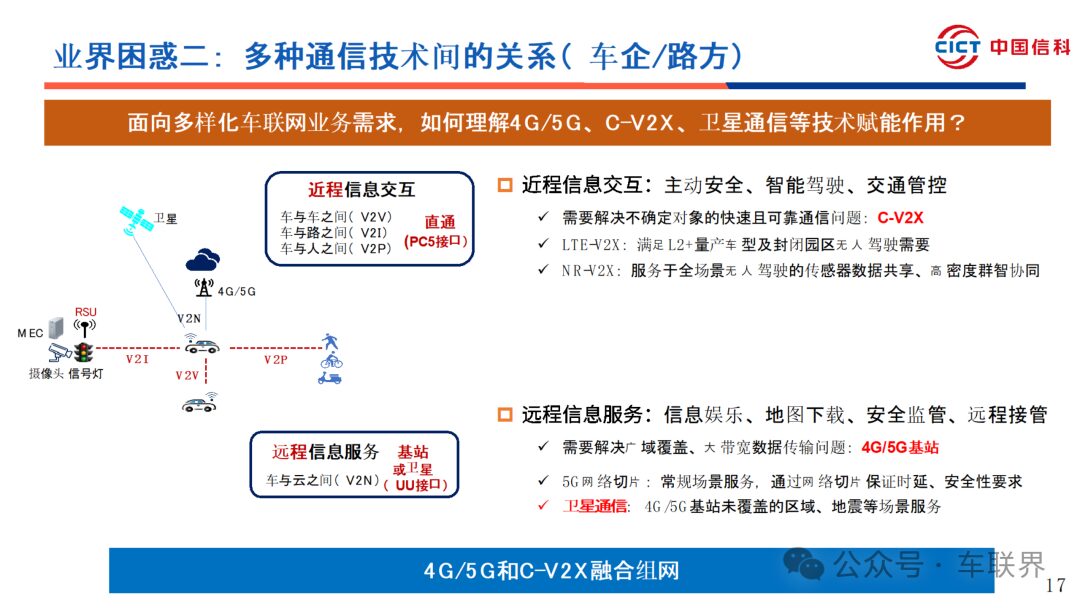
Many people often say that C-V2X vehicle networking is solely for the purpose of unmanned driving, but that is not entirely accurate. We hope that C-V2X can serve scenarios where humans drive, achieving safety warnings and assisting L2+ intelligent driving; it can also serve specific unmanned driving scenarios, including mining, ports, airports, and specific urban areas for RoboTaxi. Both of these scenarios have significant commercial demand today. In the future, vehicle networking will empower L5 all-weather, all-scenario unmanned driving.

Recently, satellite communication has become a hot topic, with some believing that satellite communication will replace 5G and C-V2X, which is incorrect. C-V2X vehicle networking, 5G, and satellite communication are complementary. Satellite communication primarily extends the V2N functionality, solving communication issues in areas where 5G base stations cannot reach, thus expanding long-range information services. However, satellite communication does not have advantages in urban areas and regions obstructed by buildings and overpasses.
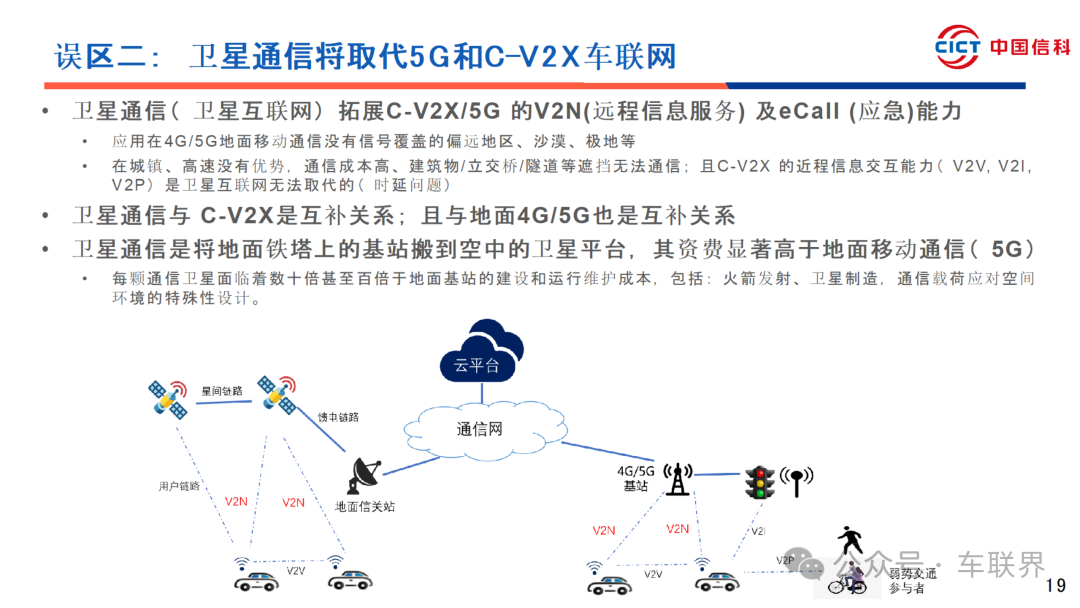
Here are a few points of view. Viewpoint one, single vehicle intelligence is the foundation, and networking is the enhancement, which empowers. I particularly emphasize that the stronger single vehicle intelligence is, the better. I express this to vehicle manufacturers: first, what single vehicle intelligence can do well, networking should not do. Second, if single vehicle intelligence is costly, can C-V2X networking reduce some costs? Third, what single vehicle intelligence cannot solve, networking can assist in solving.
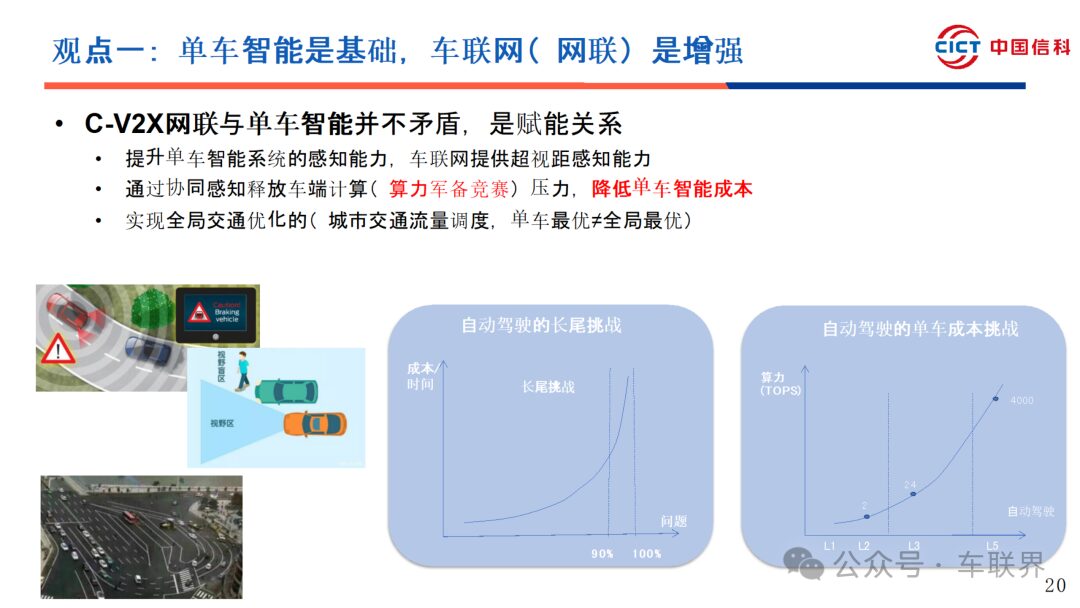
For example, single vehicle intelligence struggles to recognize traffic signal lights in all-weather, all-scenario conditions, facing challenges in strong backlighting, heavy snow, and rain. To address specific scenarios (corner cases), vehicle manufacturers often need to enhance algorithms and computing power, increasing costs. However, if the C-V2X RSU broadcasts traffic signals directly, vehicles can obtain traffic light information easily and promptly. Another example is global traffic optimization; single vehicle intelligence is essentially a game between individuals and does not consider global optimization. For instance, when an emergency vehicle such as a fire truck or ambulance arrives, the single vehicle may not respond in time, delaying the passage of emergency vehicles. If vehicle-to-vehicle communication is in place, it can quickly clear a lane.
Viewpoint two, currently, the collaborative perception between vehicles and roads is based on each’s autonomous decision-making. Sometimes, people say that the road controls the vehicle, and others say that the vehicle directly controls the traffic light; neither is the case. The phenomenon of mixed traffic between human driving and automated driving will exist for a long time. Currently, while both vehicles and roads need to be intelligent, they still make autonomous decisions. The roadside provides perception information to the vehicle, which then drives based on its single vehicle intelligence; traffic departments receive driving information from vehicles and autonomously decide on the dynamic scheduling and control of traffic signals and tidal lanes. This adheres to existing road traffic management regulations, clarifying responsibilities.
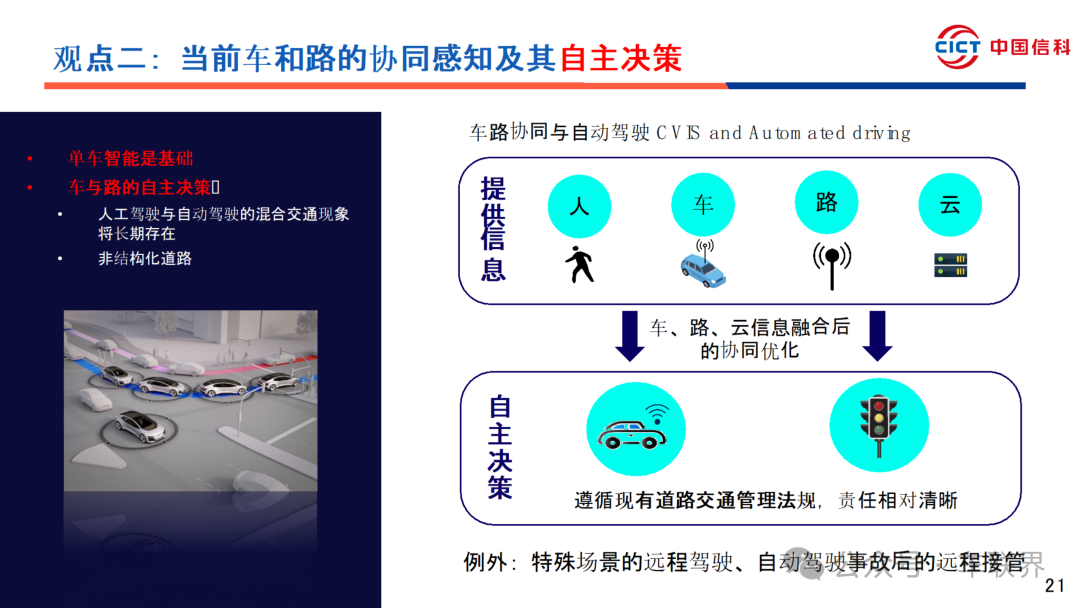
Viewpoint three, vehicle networking as a new type of infrastructure promotes the integration of vehicle, road, and city development. In the collaborative promotion of intelligent connected vehicles and smart city development, vehicle networking, as a new type of infrastructure, achieves a certain coverage range, which can serve smart cities. In the future, if edge computing achieves full coverage at intersections, it will become a network of urban computing infrastructure, providing intelligent driving services to ordinary users; providing networking empowerment services to vehicle manufacturers, public transportation, and logistics; and empowering traffic management and urban governance services to the government.
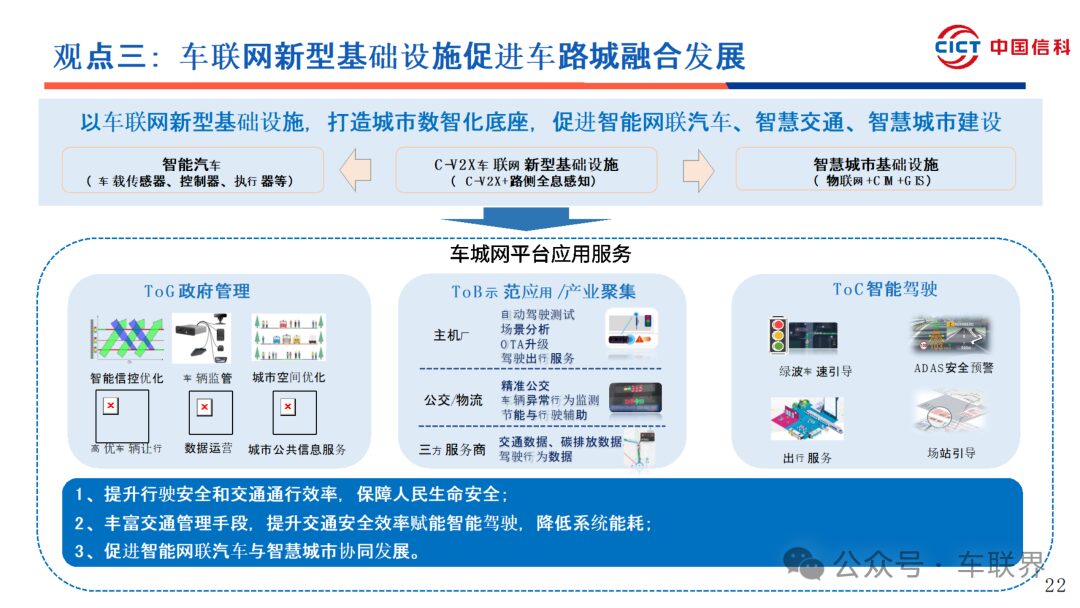
Below are two suggestions. Suggestion one: Promote C-V2X vehicle-road collaboration in stages and scenarios. Currently, advance intelligent driving assistance (L2+) for driving safety and traffic efficiency; as well as empower specific unmanned driving scenarios, including ports, airports, terminals, and specific road Robotaxis. In the future, empower all-weather, all-scenario unmanned driving on open roads.
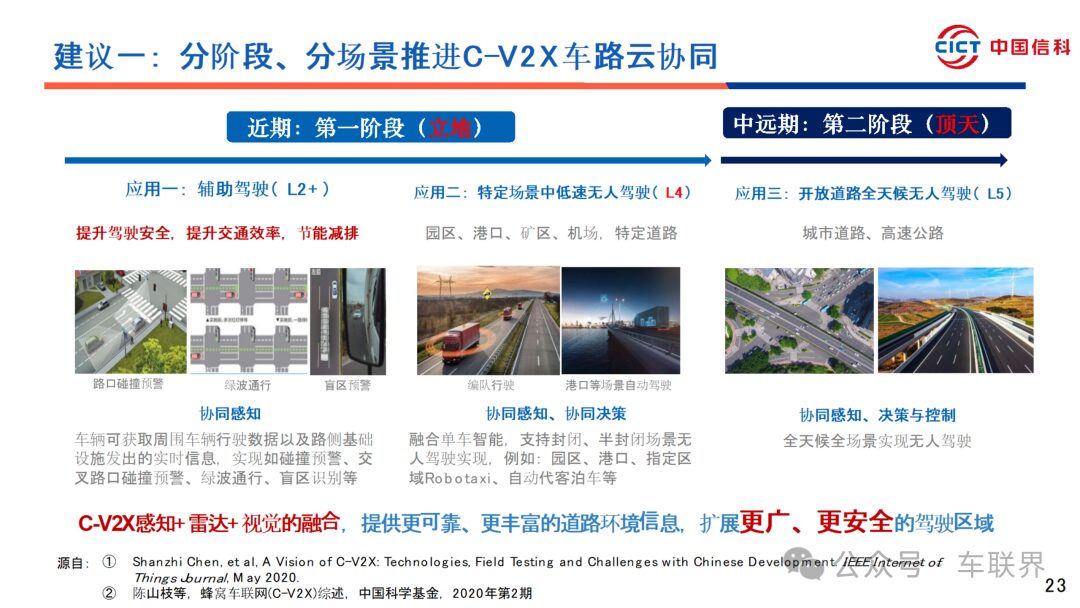
Suggestion two, connect the proactive government with effective market forces, to promote C-V2X vehicle networking and vehicle-road-cloud collaboration. Initially, during market failure, the proactive government should accelerate the seamless integration of cities, providing vehicle manufacturers with continuous C-V2X signal lights and complex intersection perception services. Once coverage reaches a certain level, effective markets can naturally initiate; creating a nationwide network, breaking down the unification of construction and application standards across regions, ensuring that vehicle networking development progresses along a unified national network and application system.
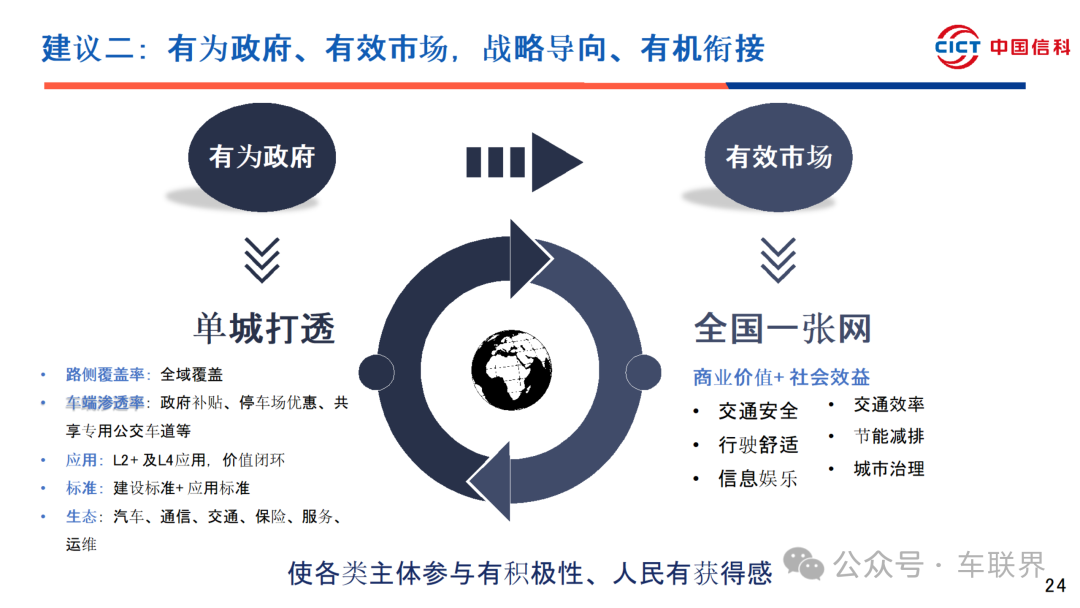
Let me briefly make two small advertisements: First, China Information and Communication Technology Group is the original technology source for C-V2X vehicle networking, with a series of core products and solutions for C-V2X, including C-V2X chips and front-mounted modules, OBUs, and RSUs. The leading area for vehicle networking and smart highways is in a leading position in the industry, with RSUs ranking first in deployment across the national leading and demonstration areas.
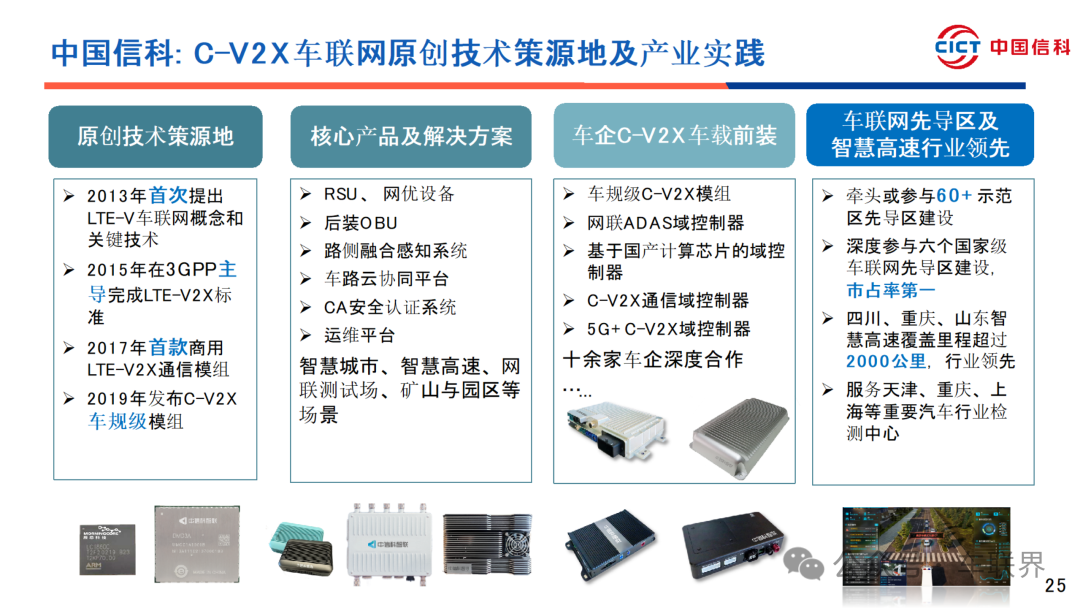
I have published two bilingual books, the world’s first C-V2X monograph, which has received support from experts such as Academician Wu in the communications field, Academician Zheng in the automated driving field, and Academician Li in the automotive field, who have all written prefaces.
Finally, let me look ahead: the development of the C-V2X vehicle-road-cloud collaboration model will lead China to establish a development model for intelligent connected vehicles and intelligent transportation, based on the “smart car + intelligent road + collaborative cloud” model, supporting the transformation of China’s automotive industry and transportation sector, while cultivating new business forms and models such as smart road network operators and mobility service providers, creating new advantages in the digital economy and smart cities, and contributing to the modernization of China.

Source: Vehicle Networking Industry
